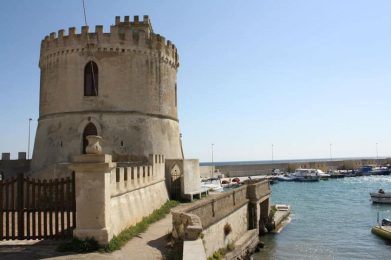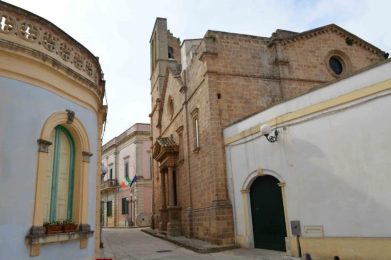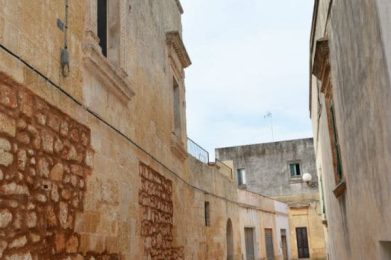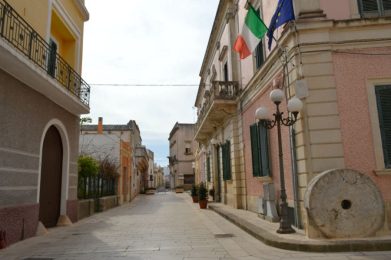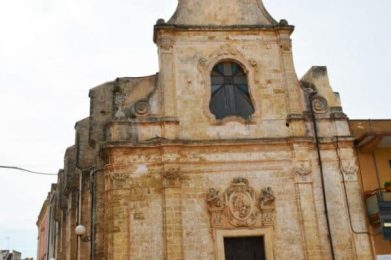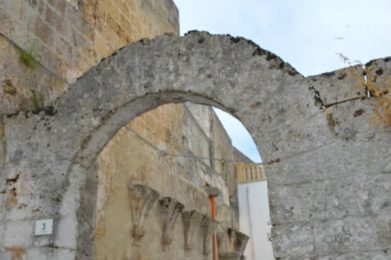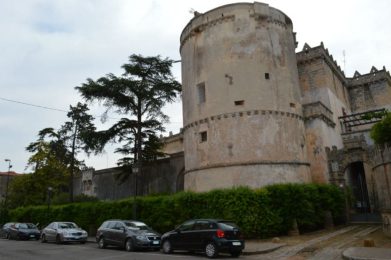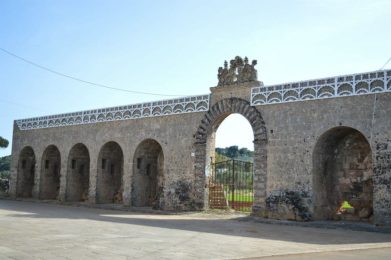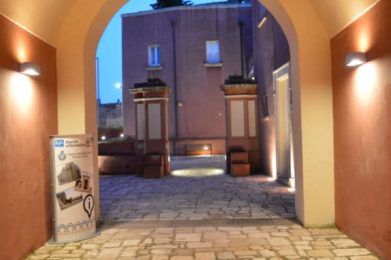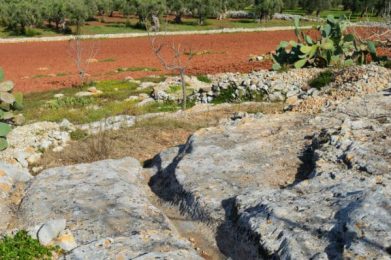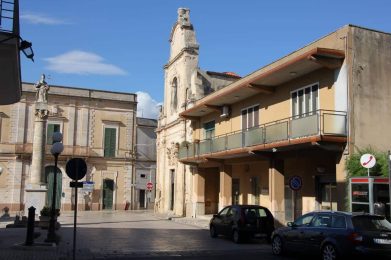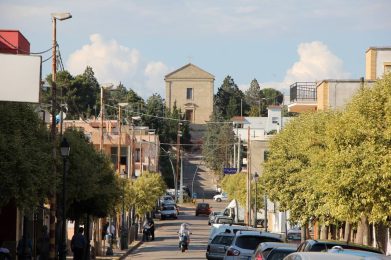At the southernmost point of the Salento peninsula, where the land meets the sea in an embrace of light and color, stands Morciano di Leuca. This village, overlooking the Ionian side of Puglia, guards a heritage of millenary history, deep spirituality, unspoiled nature and peasant traditions. A territory that also includes its two hamlets, Barbarano del Capo and Torre Vado, joined to the capital by a shared cultural identity and a beauty that manifests itself in a thousand forms.
Immagini del borgo
Morciano di Leuca is rooted in the centuries, possibly built on the remains of the legendary Vereto, a town destroyed by the Saracens in the 9th century. The beating heart of the town is the Valentini Castle, a majestic fortified structure built in the 14th century and remodeled in the 16th century to face threats from the sea. The castle, with its ramparts, stables, warehouses and interior stores, tells stories of feudal power and daily life.
A short walk away, the Chiesa Matrice di San Giovanni Elemosiniere has an imposing façade and houses artistic elements inside that reflect the deep spirituality of the place. Also noteworthy is the Church of the Rosary (also called “Madonna del Carmine”), built in 1486 and featuring wooden and papier-mâché statues, as well as an ancient organ of considerable value.
A village that speaks of land, grain and oil
Morciano’s identity can also be read underground. Literally. Through the transparent slabs of the square one can glimpse the granary pits and an underground oil mill, witnesses to the agricultural activity that has given life and sustenance to the town for centuries. Olive oil, the symbolic product of Salento, was born in these very places carved into the rock, where peasant labor marked the rhythm of the seasons.
Barbarano del Capo: the “Little Leuca” of the pilgrims
A few kilometers from the center, Barbarano del Capo is a small rural gem. Its historical and spiritual importance is linked to the Sanctuary of Santa Maria di Leuca del Belvedere, also known as “Leuca Piccola,” built as a stopover for pilgrims on their way to the Marian shrine of Leuca. Inside are underground rooms, cisterns, dormitories and frescoes that evoke centuries of devotion and spiritual transit.
Barbarano is also famous for the “vore,” deep karst cavities that, according to popular legends, were considered gateways between the earthly and subterranean worlds. The main ones are the Vora Grande and Vora Piccola, impressive in size and mystery.
Torre Vado: guardian of the Salento sea
The seaside hamlet of Morciano di Leuca is Torre Vado, a seaside resort that takes its name from the 16th-century watchtower, commissioned by Charles V to protect the coast from privateers. Located a few meters from the sea, it once housed a horseman ready to gallop inland to sound the alarm in case of danger. Today it is a symbol of tranquility and beauty.
The Torre Vado area is renowned for its sandy beach with shallow waters perfect for families. The marina hosts fishing and excursion boats, and the bay is framed by small coves and crystal clear waters that fade from turquoise to deep blue.
An authentic experience among taste, faith and nature
Morciano di Leuca is not just a place to visit: it is an experience to live. Amid local flavors such as orecchiette alle cime di rapa (turnip greens), ciciri e tria (a type of pasta with turnip tops) and extra-virgin olive oil produced according to ancient methods, every meal is a ritual. Religious festivals, processions, festivals and summer events unite sacred and profane, community and visitors.
For those who love to explore, the area offers nature trails, walking and biking routes along the coast and inland, and authentic hospitality that makes your stay a moment of deep connection with the truest Salento.
Morciano di Leuca is a great little treasure of Salento. From the ancient walls of the castle to the transparent sea of Torre Vado, via the timeless spiritualities of Barbarano del Capo, this village is a condensation of history, nature, faith and tradition. A place where time slows down, the light becomes golden, and every stone tells a story.
Village of Morciano di Leuca
Municipality of Morciano di Leuca
Province of Lecce
Region of Puglia
Inhabitants: 3,352
Altitude center: 130 m a.s.l.
The Municipality is part of:
Borghi Autentici d’Italia
Municipality
Piazza Papa Giovanni Paolo II 1 – tel. 0833744521
ON THE TRAIN
- Lecce station
- Brindisi station
BY PLANE
- Brindisi Airport

